Brooks Catamount 2
Test Location: Marin, CA
Test Duration: 110 (so far)
Stated Stack Height (Men’s): (approx.) 30 mm (heel) / 24 mm (forefoot)
Stated Heel-to-Toe Drop: 6 mm
Stated Features:
- “SkyVault” propulsion plate for increased energy return and protection
- Toe cap and mud guard help shed debris
- “DNA FLASH” midsole made from a nitrogen-infused foam compound
- Sticky “TrailTack” rubber outsole
- Drainage slits for wet weather running
Stated Weight per Shoe (US Men’s Size 9): 275 g / 9.7 oz
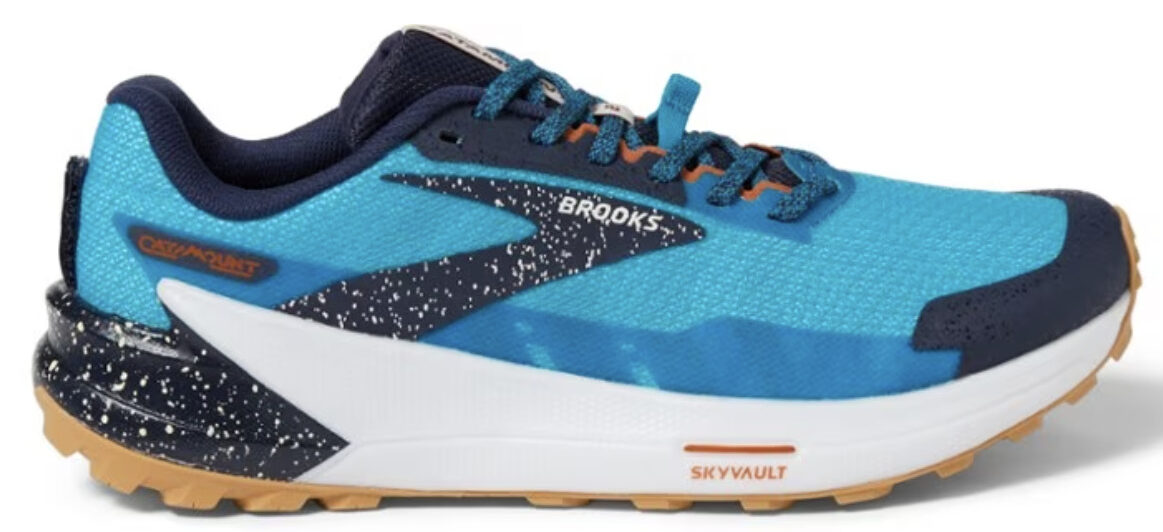
Blister Measured Weight per Shoe (US Men’s Size 8.5):
- Shoes + Laces: 238 g (left) & 239 g (right)
- Insoles: 13 g (left) & 14 g (right)
- Total: 251 g (left) & 253 g (right)
Reviewer: 5’9”, 150 lbs / 175 cm, 68 kg
MSRP: $170
Intro
Brooks’ established but somewhat stagnated trail line was reinvigorated by the release of the Catamount in 2020, a shoe that allowed the brand to experiment with form and play with new types of technology and material. The lightweight, well-cushioned racer also appealed to the growing number of runners swept up in the ultra scene, debuting to much acclaim and seemingly omnipresent at start lines. However, the original Catamount wasn’t without its own set of shortcomings, particularly on more technical trails. It also possessed a kind of chimeric identity as a model with the measurables of a shoe intended for fast 50k’s and below, yet rolled out as one aspiring to the 100-mile distance.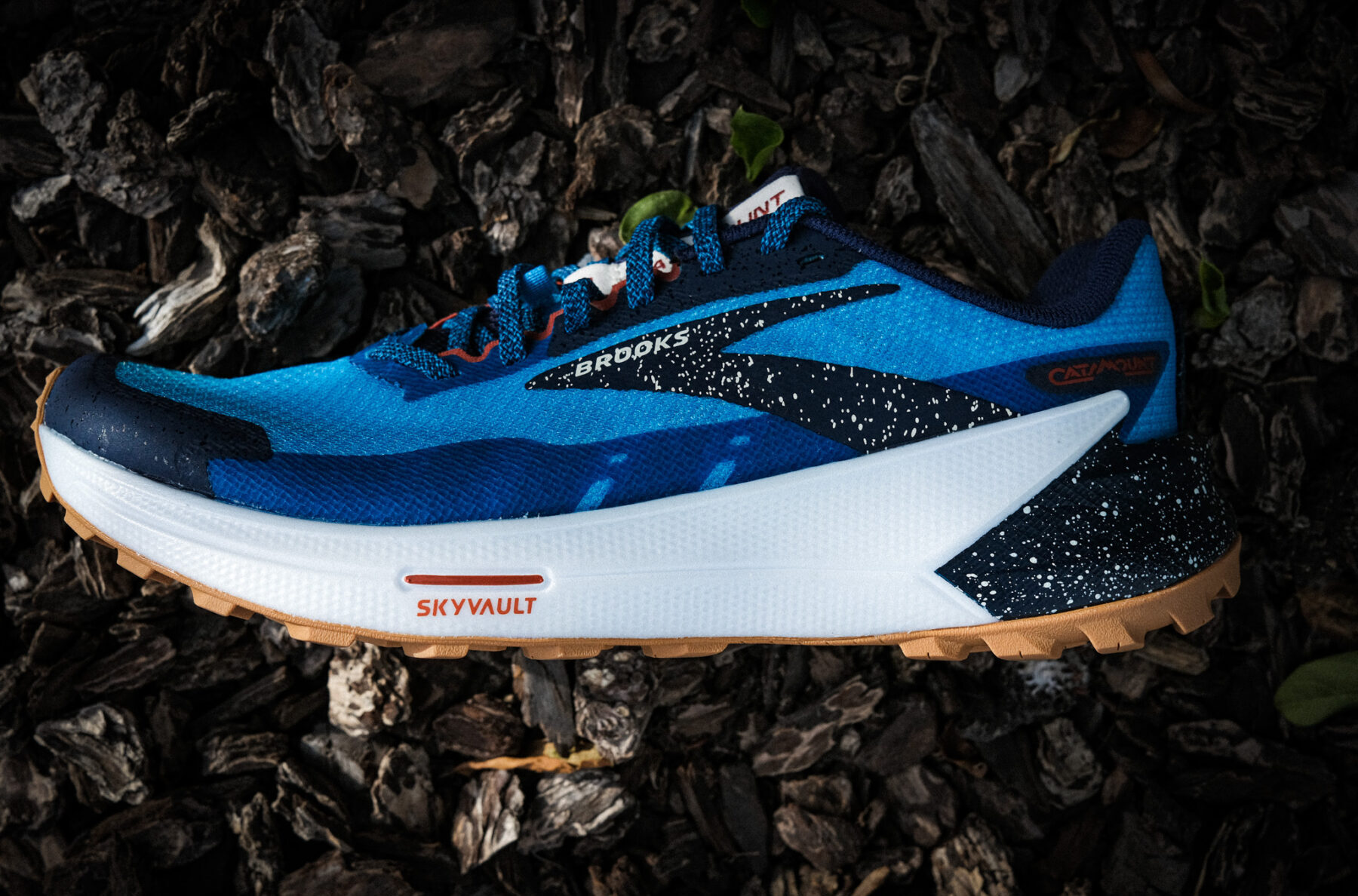
Fit & Features
The Catamount 2 has a more performance-oriented bent than most of the other shoes in Brooks’ lineup and the way it fits reflects that. There’s quite a bit less play in the forefoot than in models like the Caldera, though I’d still consider it on the wider side of things when compared to shoes like the Salomon S/LAB Pulsar 2. The last tapers up nicely into a supportive midfoot that, on first impressions, feels like it should provide excellent security / arch support while running at faster clips, precisely what the shoe feels like it’s hungry for. A padded, low-rise heel collar backs up the Catamount 2 to complete a cradle-like fit that I’m excited to subject to some uptempo workouts this spring / summer. I’d also note that my US Men’s 8.5 runs true to size.
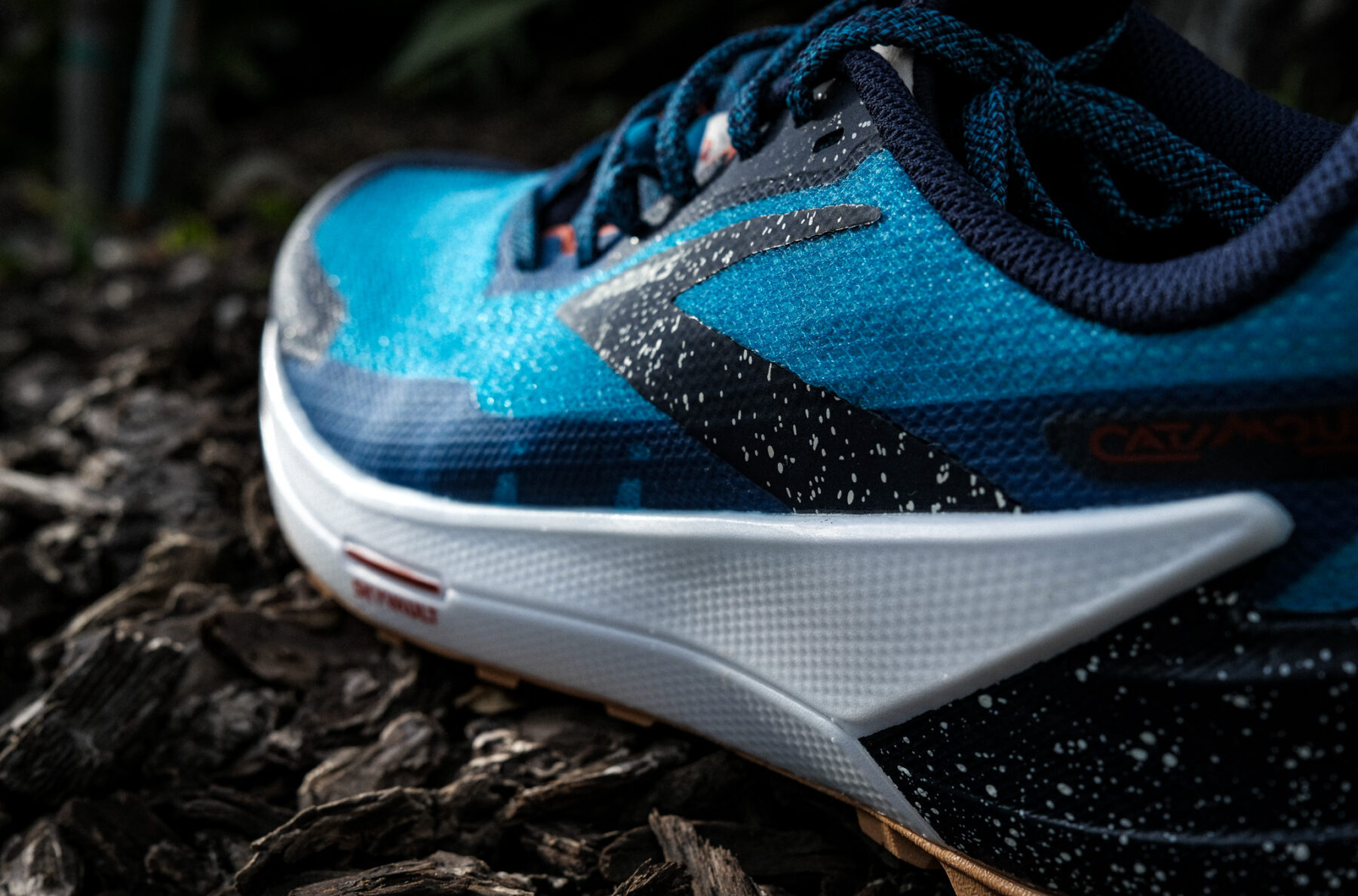
I’m generally a subscriber to the idea of simplicity as it relates to trail shoe uppers; give me a single piece of engineered mesh, one or two welded TPU overlays, and send me on my way. The original Catamount did pretty much exactly this, but in a baggy style that didn’t suit the shoe’s high-performance ambitions. In the Catamount 2, Brooks has replaced the structureless mesh upper that defined the first version with a more comprehensive example. An engineered mesh outer layer, complete with a mud guard and toe cap, is propped up by an internal lining and gusseted tongue that hugs the foot and helps keep it in place. As the shoe moves toward the hindfoot, it’s bolstered by an unobtrusive amount of ankle collar cushioning that joins together to form a subdued heel collar. So far, this construction has done a stellar job of locking in my foot. Also, for what it’s worth, the Catamount 2 is also gaiter compatible, a thoughtful detail that’s not really seen on too many trail shoes these days.
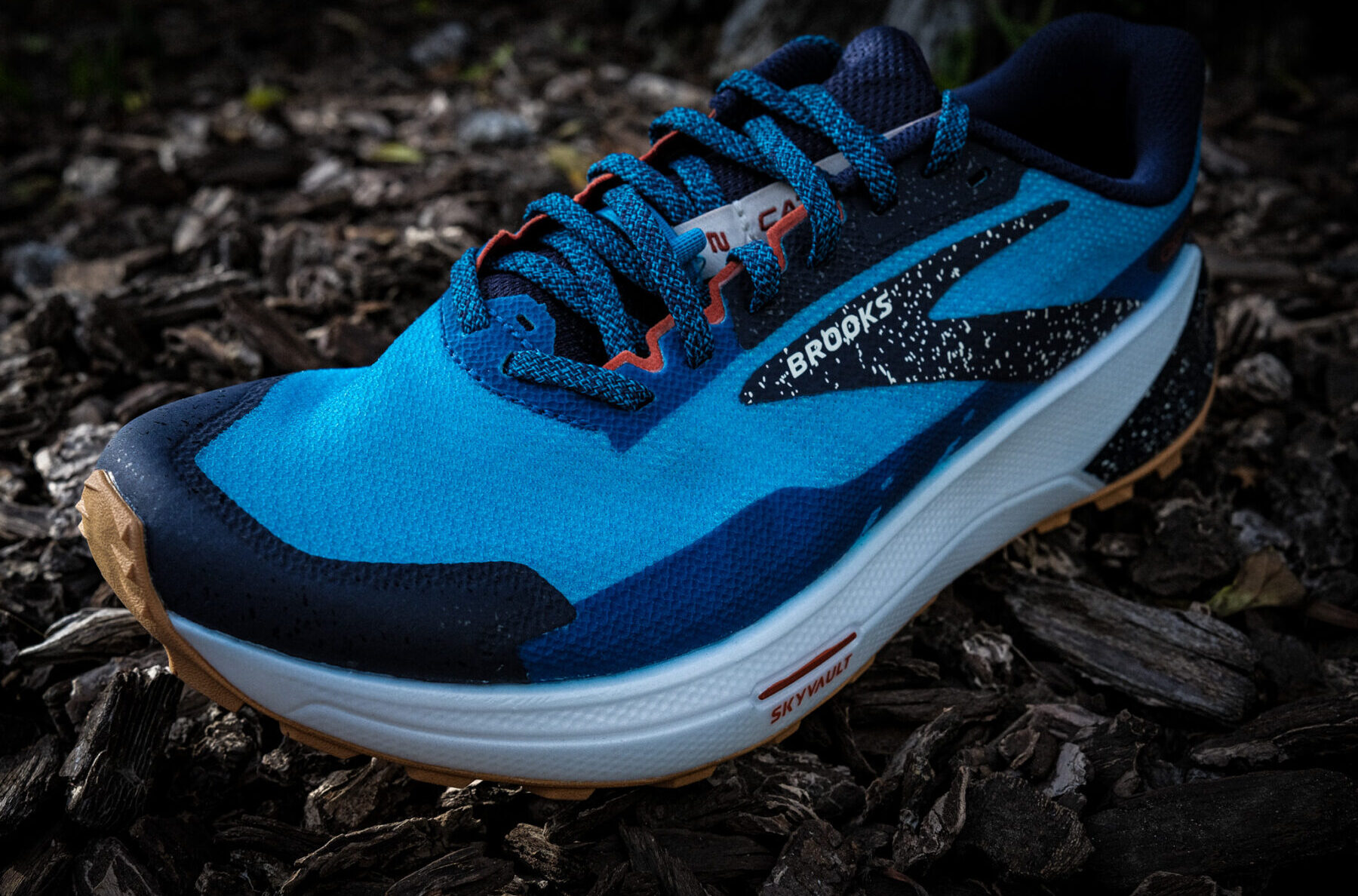
I initially scoffed when I read that Brooks’ single density DNA FLASH midsole material was “crafted from a nitrogen-infused compound,” a proposition I took mainly to be a marketing ploy. After running a handful of miles in the Catamount 2 though, I’ve been brainstorming ways to inject nitrogen into the rest of the shoes in my quiver. The Catamount 2’s ride feels similar to the energetic and quick-to-recover “EExpure” midsole foam Nnormal uses in the Kjerag, and because the two models share similar stack heights / drops (22 mm / 16 mm for the Catamount 2 vs. 32.5 mm vs. 17.5 mm in the Kjerag), their apt for comparison. However, the Catamount 2 does weigh in 75 g heavier than the Kjerag (and 11 g heavier than the original Catamount), a perceived difference I’d chalk up to its “SkyVault” propulsion plate and more structured upper, among other things. For more context, here’s how the Catamount 2’s stated weight compares to the stated weights for some other similar models. All weights are based on a US Men’s Size 9.
178 g / 6.3 — Salomon S/LAB Pulsar 2
200 g / 7.05 oz — Nnormal Kjerag
247 g / 8.7 oz — Hoka Torrent 3
249 g / 8.8 oz — Hoka Tecton X 2
255 g / 9 oz — Naked T/r
255 g / 9 oz — Saucony Endorphin Edge
260 g / 9.2 oz — Nnormal Tomir
264 g / 9.3 oz — Brooks Catamount
270 g / 9.5 oz — Salomon Pulsar Trail Pro
275 g / 9.7 oz — Brooks Catamount 2
295 g / 10.4 oz — Hoka Mafate Speed 4
295 g / 10.4 oz – On Cloud Ultra
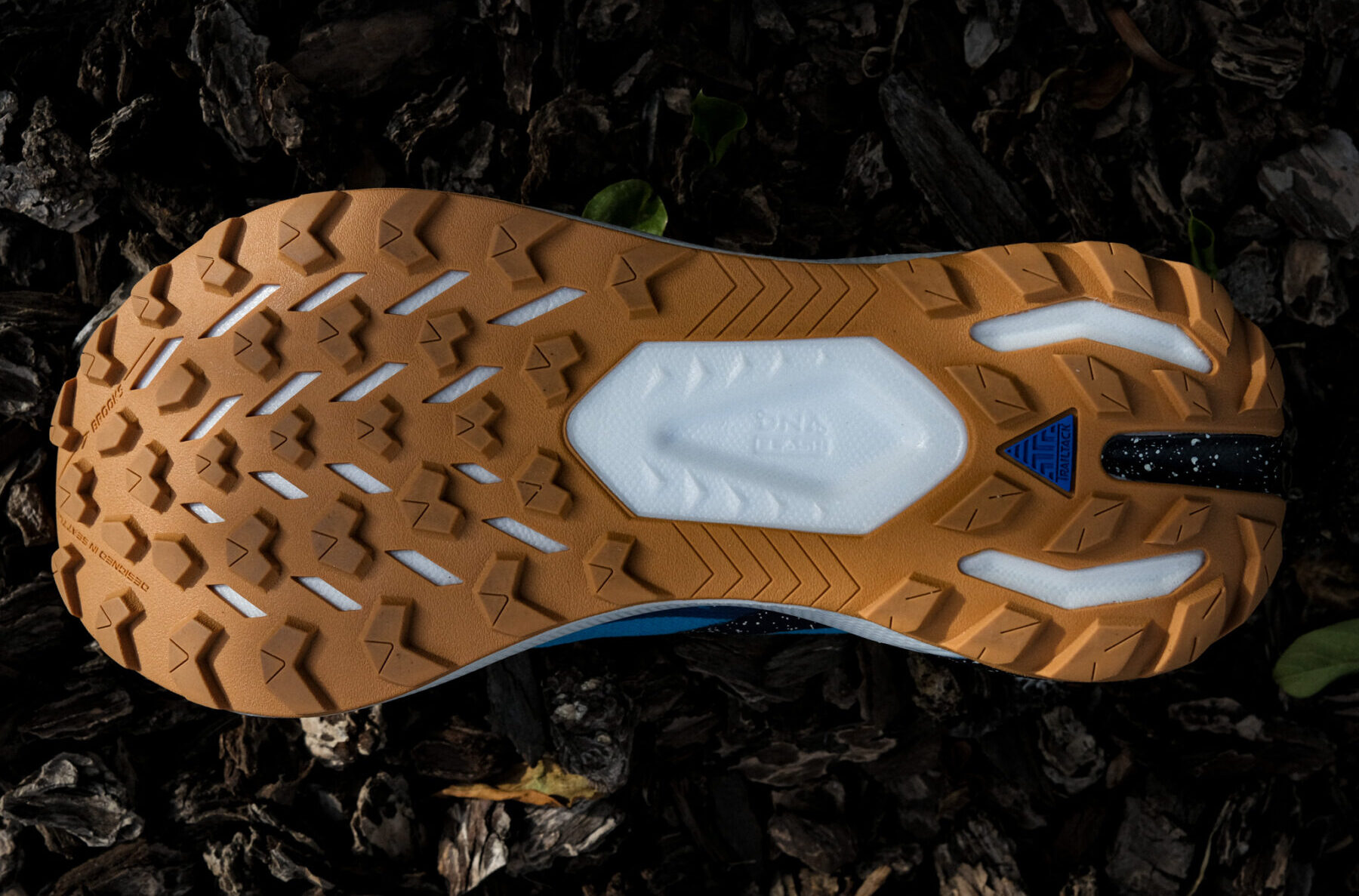
Some Questions / Things We’re Curious About
- I’m a little wary of trusting Brooks’ claims surrounding the propulsive qualities of the Catamount 2’s SkyVault plate. Will it actually increase the shoe’s energy return? Or just function as a glamorized rock plate?
- Despite the Kjerag’s relatively low stack height, I felt like I could comfortably rip off 20-30 mile runs given the cushioning its midsole provided. Can I expect the same experience in the Catamount 2 based on their similar beginnings?
- The Catamount 2 gained some grams in its second iteration, typically a no-no for shoes that aspire to go fast. How noticeable will this additional weight end up being?
Bottom Line (For Now)
Though still early on in testing, the Brooks Catamount 2 is shaping up to be a dynamic mid-distance trail shoe that has shades of models we’ve loved in the past. Whether or not the updates to the Catamount 2 can sustain the same level of success set by the original version will be a focal point for our upcoming full review. Stay tuned.
FULL REVIEW
Intro
At 109 years old, Brooks is one of America’s longest-lived footwear manufacturers. While the brand originally produced products for a wide variety of sports and activities, their scope narrowed to focus on running as recently as the early 2000s, with a concentration on advancing performance technology for their athletes. Within only a handful of years, Brooks carved out a dominant share in the specialty running shoe market, relying on what are now considered heritage models — like the Beast, Ghost, and Adrenaline — to appeal to a general audience. In 2011, the company surpassed $500 million in revenue, a milestone that cemented its status as a legacy brand in the US.
While Brooks has pumped a ton of innovation into their road running division, their presence in the trail space has felt somewhat middling for the past half-decade or so, with the bulk of their movement coming in the form of updates to longstanding models like the Caldera and Cascadia. However, all of that changed when Brooks released the Catamount in 2020, a lightweight, well-cushioned racer designed to appeal to the ultra scene (the Western States 100 course profile was etched into the upper, next to perforated lines to write crew members’ names). The shoe found favor with most people; it checked in under 9.3 oz / 264 g for a US Men’s Size 9, included a rock plate, and Brooks’ “DNA FLASH” midsole held up to the demands of ultra-distance runs quite well. However, it wasn’t without its own set of shortcomings, particularly on more technical trails, and it at times felt like it signaled contrasting roles as both a shorter-distance racer and a 100-mile specialist.
Fit
For me, baggy uppers and clumsy silhouettes have been the undoing of Brooks’ trail shoes in the past, including with the original Catamount, so I half-expected issues related to fit to crop up much in the same way in the Catamount 2. However, I think the shoe’s performance-forward design spares it of similar pitfalls. There’s quite a bit less play in the forefoot than in models like the Caldera, yet it’s nowhere near as narrowly channeled as some shoes that embody what’s often known as a “European-style fit” like the Salomon S/LAB Pulsar 2 or On Cloudventure. Instead, the Catamount 2’s last tapers up smoothly into a supportive midfoot that has provided excellent security / arch support across all speeds / distances so far.
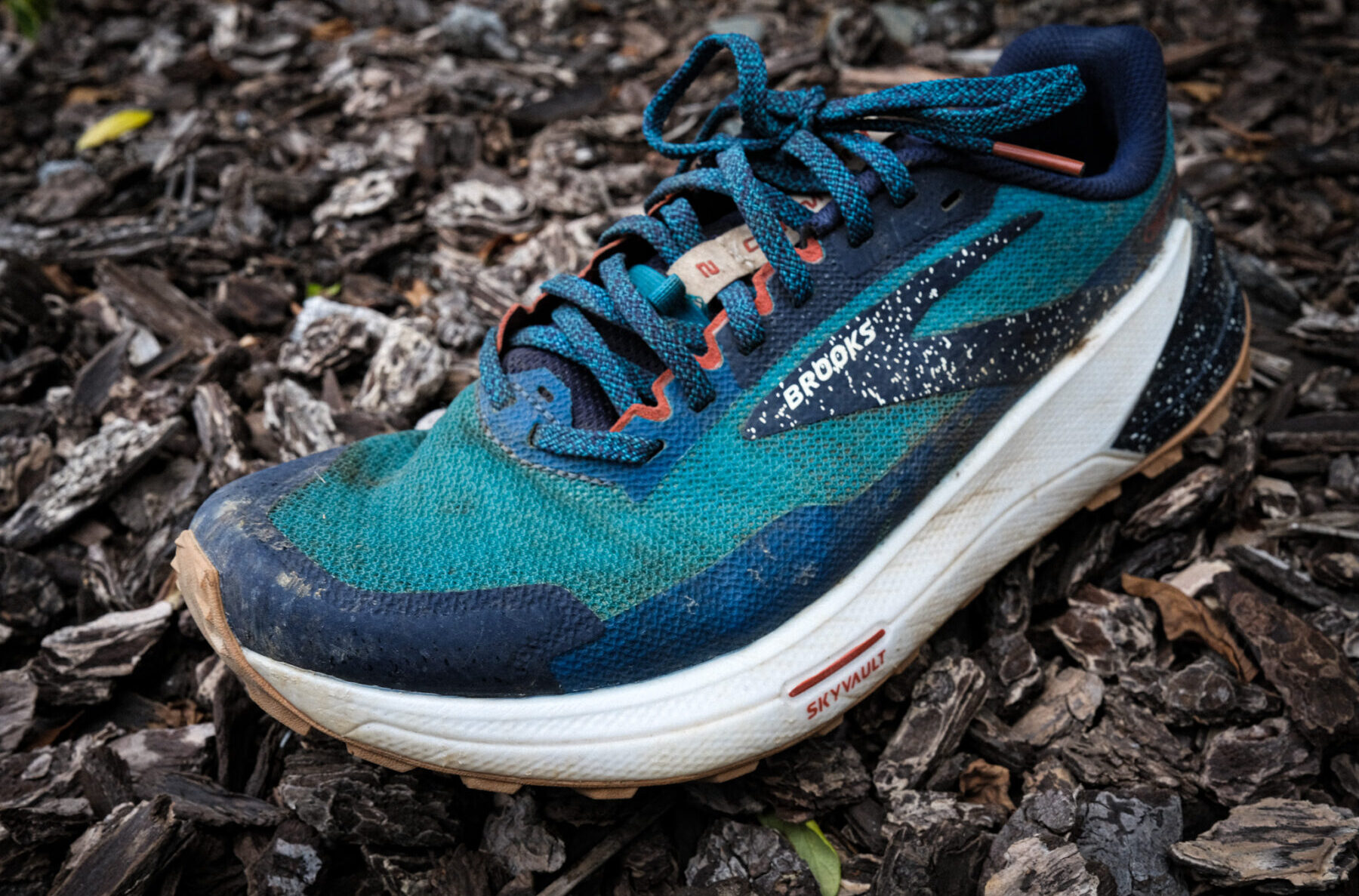
Brooks helped pioneer the concept of “stability” shoes, and while the Catamount 2 is in a completely separate league than their motion control models like the Adrenaline and Beast, I think its fit through the midfoot does take on some of their influence. Even at faster paces on off-camber terrain, my foot felt comfortably suspended in the shoe, free to pivot and flex but never allowed to compromise control. Most shoes that aspire to speed surrender structure for pliability and weight, and though the Catamount 2 is a bit heavier than models of that ilk, like the Nnormal Kjerag and Hoka Zinal, I think the attention Brooks pays to ensuring foot security is well worth it. Setting the Catamount 2 up in this way (i.e., with added emphasis on midfoot support) also reduces the strain placed on the heel collar and surrounding areas. The shoe backs up into a padded, low-rise collar that’s firm but proportionally cushioned. I’ve yet to experience any heel slippage across the multiple types of runs I’ve laced the Catamount 2 up for, including steep hill intervals and vert-heavy long runs.
Based on the mildly flared-out last Brooks uses, one that starts with a roomy toe box before funneling into what I’d consider a standard to slightly narrow midfoot, I’d recommend the Catamount 2 to folks with average to moderately wide foot shapes without hesitation. For a point of comparison, the shoe’s fit reminds me of the Hoka Zinal, but with more structure. I’d also note that my US Men’s 8.5 runs true to size.
Weight
Rarely does a running shoe get away with gaining weight between iterations these days. Similar to the unwritten rules of baseball that keep batters from bunting to break up a no-hitter or swinging on a 3-0 count when their team’s ahead, it’s standard practice for most updates to trim at least a gram or two for presentation. At 275 grams for a US Men’s Size 9, which is 11 g heavier than the original Catamount, the Catamount 2 completely disregards this custom and I’m completely ok with it. The shoe adds what I felt to be a bit more cushion and definitely more structure, not only enhancing its fit, but increasing its versatility. The added weight also serves as a clue that tips Brooks’ hand when it comes to how they think about the Catamount 2’s evolving role. Using a bit of inference based on the information available, I’d say they want to push the shoe into the ultra-distance performance category. For more context, here’s how the Catamount 2’s stated weight compares to the stated weights for some other similar models. All weights are based on a US Men’s Size 9.
178 g / 6.3 — Salomon S/LAB Pulsar 2
200 g / 7.05 oz — Nnormal Kjerag
247 g / 8.7 oz — Hoka Torrent 3
249 g / 8.8 oz — Hoka Tecton X 2
255 g / 9 oz — Naked T/r
255 g / 9 oz — Saucony Endorphin Edge
260 g / 9.2 oz — Nnormal Tomir
264 g / 9.3 oz — Brooks Catamount
270 g / 9.5 oz — Salomon Pulsar Trail Pro
275 g / 9.7 oz — Brooks Catamount 2
295 g / 10.4 oz — Hoka Mafate Speed 4
295 g / 10.4 oz – On Cloud Ultra
On paper, the Catamount 2 comes off a bit sluggish next to the numbers of some of the “faster” models on this list, but there are quite a few other factors that contribute to speed than weight alone. In this case, the Catamount 2’s midsole construction, which I’ll elaborate on shortly, does such an efficient job of transferring energy that the shoe has the feel of something much lighter. When you also take into account the likely improved durability, protection, and structure Brooks is able to confer without being overly anal about weight, the tradeoff they make starts to look lopsided in their favor.
Upper
As I mentioned in my initial thoughts on the Catamount 2, I’m generally a subscriber to the idea of simplicity as it relates to trail shoe uppers; give me a single piece of engineered mesh, one or two welded TPU overlays, and send me on my way. The original Catamount did pretty much exactly this, but in a baggy style that didn’t suit the shoe’s high-performance ambitions. As a result, the shoe felt handicapped. It clearly hungered for quicker paces but sputtered at high speeds because it lacked foot control. Brooks set out to correct this in their second crack at the shoe by restructuring the upper completely. The Catamount 2 features a sturdy, engineered mesh outer layer that wraps the shoe, complete with a mud guard and toe cap over the forefoot. Beneath, it’s propped up by an internal lining and gusseted tongue that hugs the foot and helps keep it stationary. Brooks nailed this new upper’s execution despite its added complexity. Aside from enhancing on-foot comfort, the lockdown the new design provides has given me enough confidence to push paces on technical terrain without feeling like my foot is pinballing back and forth. And because the materials Brooks uses are far from gossamer-thin, I think the Catamount 2’s upper figures to be pretty protective against trailside debris.
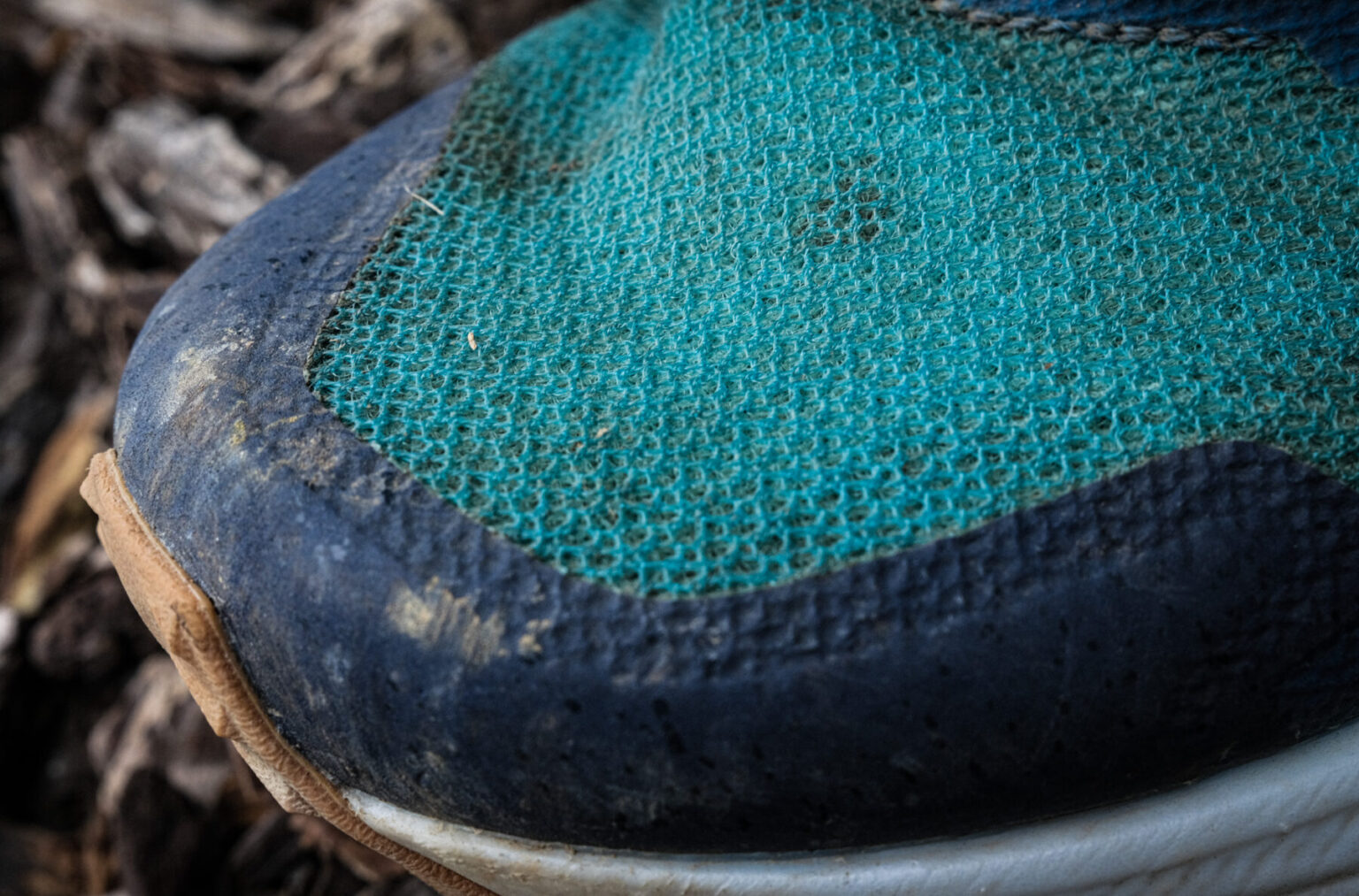
Midsole
Done well, I’m a sucker for a good marketing ploy, and whether the nitrogen that’s supposedly infused into Brooks’ DNA FLASH midsole compound has any measurable effects when it comes to the shoe’s performance is secondary to how brazen of a concept it is. In all seriousness, the supercritical EVA foam that gives the Catamount 2 its kick is exciting. Similar in durometer to what’s used in the first version, there feels like there’s a bit more of it, though Brooks doesn’t provide exact numbers when it comes to stack height. DNA FLASH is inherently pretty lively, akin in my opinion to the “PWRRUN PB” foam Saucony uses in a few of their trail shoes but a bit more energetic than Nike “React” foam. So far, it’s held both its shape and bounce, which I think could be augmented by the inclusion of what Brooks calls their “SkyVault” propulsion plate, a TPU panel inserted under the forefoot.

I have a history of not really agreeing all that well with plated trail shoes for what I think is good reason — the more rigid examples subtract from ground feel and can be quite tippy on off-camber terrain. With that said, I’m more bullish on Brooks’ SkyVault because it’s quite a bit more flexible than, say, what The North Faces uses in their VECTIV Pro, or even the split plate in the Hoka Tecton X 2. Unfortunately, this is likely also a sign that the SkyVault plate doesn’t really transfer energy all that well, leading me to view it more as an embellished rock plate than a performance component.
As the Catamount 2’s midsole transitions toward the heel, Brooks includes raised wings on either side of the shoe that are meant to help control the foot while running. This design feels like a direct callback to the proprietary “GuideRails Technology” they use in a lot of their stability shoes like the Adrenaline, and I found it to work in a similar fashion. The midsole’s supportive rear “chassis” provided a nice counterbalance to the propulsive qualities up front, creating a ride that always felt lively but never careless. This sense of control is also helped by the shoe’s crash pad positioned under the heel counter, which is made from a denser type of foam that cups the back of the foot and primarily serves to absorb impact from heel striking while running downhill. Taken as a single, complementary unit, the Catamount 2’s midsole acts as the shoe’s lifeforce, providing a snappy sensation that’s tempered by its structure so as not to feel too wildly erratic like similarly plated examples (e.g., the Saucony Endorphin Edge).
Outsole
At $170 and billed as their prestige trail model, I was surprised to see Brooks decide not to outsource the Catamount 2’s outsole rubber to a third party like Vibram. With this very much front of mind, I entered my testing period with a bit of skepticism paid toward the shoe’s “TrailTack” tread. Brooks used the same material in the first version of the Catamount, albeit in a tweaked orientation. The Catamount 2 received slightly deeper 4 mm lugs arranged in a layout that I think looks more strategic (and hopefully grippier). The shoe also saves a few grams by trading in its previously full-length outsole for one that leaves a zone under the midfoot bald, though I don’t suspect that decision will pose any detriment to performance.
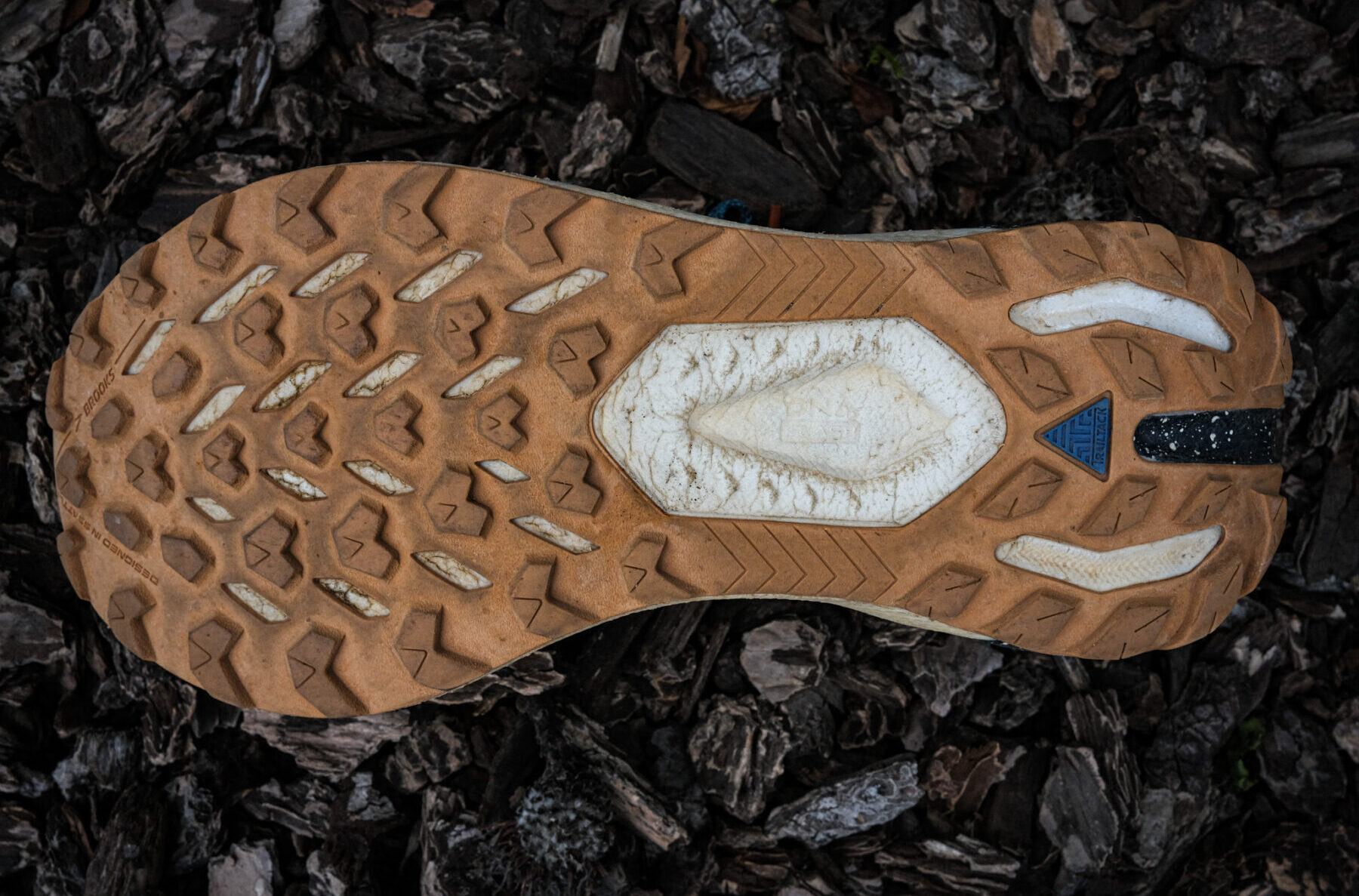
On Trail
Whether from my history working at a run specialty store that (tried to) sell Brooks trail shoes, or their rather diminutive presence on the professional racing scene (their team of sponsored athletes is small but growing), I admittedly walked into this review with prejudice. Some established footwear companies treat their trail line as a kind of formality, something they feel like they should have to stay competitive instead of a legitimate appendage they’re actively trying to improve. If I harbored any doubts as to how seriously Brooks took their trail line, the Catamount 2 has done more than enough to dispel them. I treat spring running as a chance for shoes to audition for my summer mountain running quiver, and after a few weeks on my feet, Brooks’ second attempt at the Catamount has earned itself a roster spot.
I subjected the shoe to my standard fare of training, which this time of year includes 6 days of running a week with one workout (usually some type of hill interval thing I dread with every cell in my body), a smattering of mellow social runs, and a lengthier effort between 3 and 5 hours. Long runs in Marin have proven to be probably the most fruitful way I assess trail shoes these days; routes encompass a wide variety of trail types, and they’re typically long enough distance-wise to get a good sense of a model’s preferred range. I’ve also started to mix up the paces within these efforts, throwing in a surge here and there for good measure.
A lot of models reveal their cracks quite quickly, whether that’s because they lack the cushioning to hold up for 20+ mile days, or because they’re not nimble enough to navigate technical trails at high speeds. In rare cases, it takes a bit more pressure to find a shoe’s vulnerabilities, and that’s almost always a good thing. While I balk at purportedly “do-it-all” models that claim universality, I think the Catamount 2 is within shouting distance of that ideal. Its midsole is equal amounts plush, peppy, and stabilizing; its upper provides excellent control and foot security; it’s light enough to rip workouts in, yet substantial enough for all-day pushes; and its outsole, while grippy, can eat up road miles in a non-sucky way if asked, opening up its potential as a great door-to-trail option.
Ironically, one of my favorite aspects of the Catamount 2 is unintentional, and if Brooks wants to take credit for it, that’s fine by me. I’m referring to the pliability of the shoe’s SkyVault plate — very bad for its advertised propulsion, but very good for a number of things I value much more in a trail shoe. Its flexibility permitted critical ground feel and allowed my foot to toe-off naturally during my gait cycle, both of which are frequently compromised in shoes with more rigid performance plates. As it turns out, an underperforming propulsion plate can still serve as a functional rock plate, so the Catamount 2 has been one of the more protective shoes in my rotation. These qualities — flexibility, stability, and protectiveness — expand the shoe’s versatility to include moving quickly over technical terrain, an area in which the first version struggled mightily. So, if you’re like me and felt somewhat fenced in by the original Catamount despite sharing its performance ambitions, you’ll likely be pleased with how well the Catamount 2 corrects course.
Durability
I ran a couple hundred miles in the first iteration of the Catamount before a mixture of delaminated overlays and fraying in the upper forced me to retire it prematurely. This was hard to swallow considering the shoe’s midsole and outsole both had plenty of life left in them. This time around, I’m confident that the newly engineered mesh Brooks uses in the Catamount 2’s updated upper, combined with a design that emphasizes structure / support, should fortify the shoe against wear. After 110 miles, there’s a little natural creasing in the toe box and some of the outsole’s lugs have rounded, but there are no signs of critical failure anywhere else. As always, if anything changes down the line I’ll be back with updates.
Who’s It For?
When the intentions behind a shoe are somewhat opaque, look at its price. At $170, the Catamount 2 aspires to be more than a standard option for general training. At the same time, it’s not as feature-laden nor as specifically race-tuned as models in the $200 and up category, like the Endorphin Edge ($200) and the Hoka Tecton X 2 ($225). And while the Catamount 2 does feature a performance plate of sorts, it’s far from its main selling point. For these reasons, I’m inclined to position it as an elevated all-rounder, a shoe that can be treated as a race-day option, a workhorse in your weekly rotation, or both. You shouldn’t feel like you’re spoiling miles in the Catamount 2 if you wear it for a shakeout run, nor should you feel under-gunned if you toe a starting line in a pair.
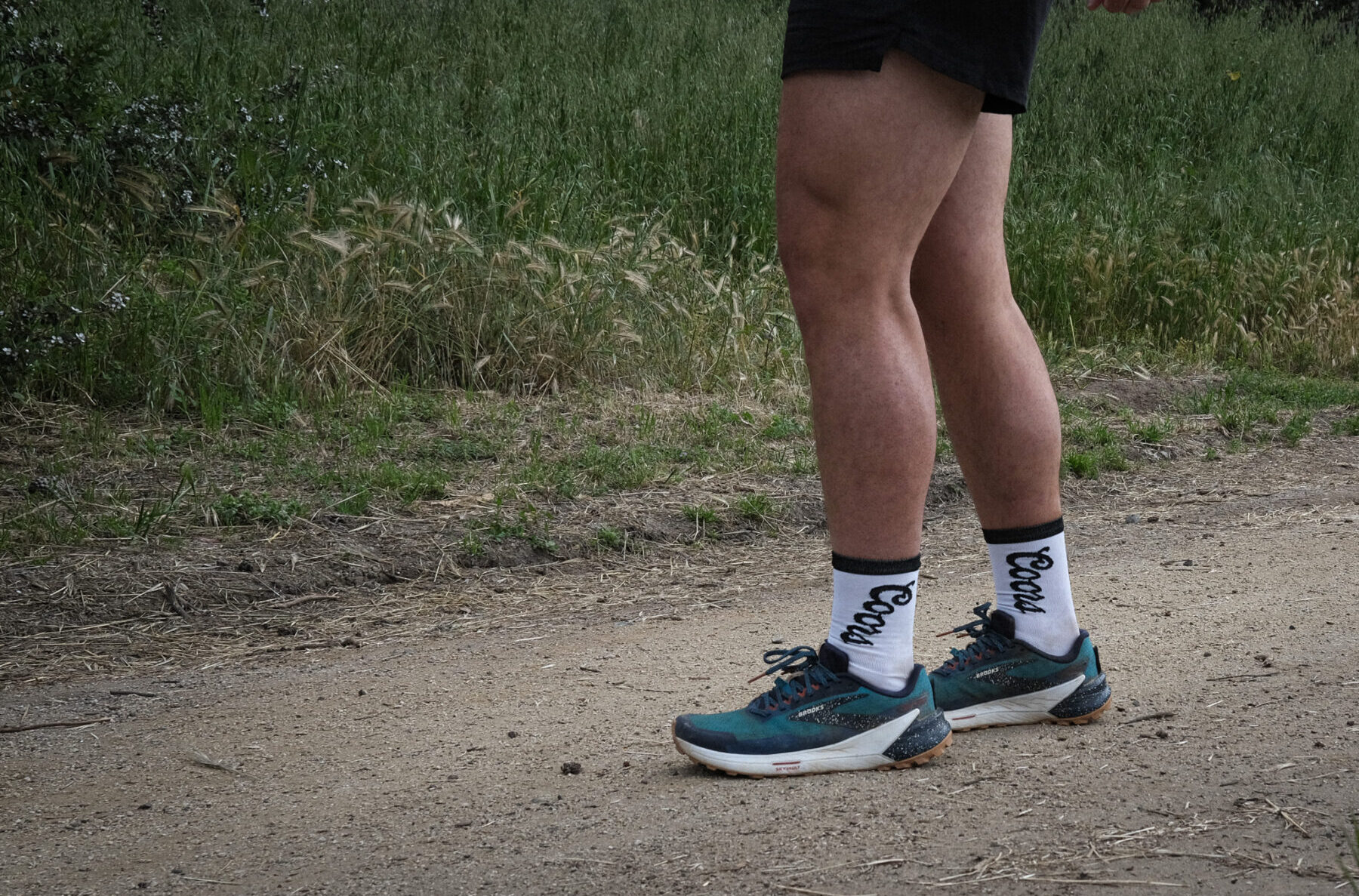
Bottom Line
After some wide-ranging testing, the Brooks Catamount 2 has all of the makings of a dynamic mid-distance trail shoe that draws comparisons to models we’ve been quite fond of in the past. Its streamlined design, highlighted by a snappy midsole made from wild-sounding, nitrogen-infused DNA FLASH foam augmented by a SkyVault propulsion plate, is a marked departure from some of the more staid models in Brooks’ lineup, like the Caldera and Cascadia. While the Catamount 2’s range is somewhat limited by its firm feel and shallow stack height, its low weight and locked-in fit have made ripping around runnable singletrack for short stretches of time a preferred activity. If you’re looking for a resourceful trail shoe that can serve as the foundation of your weekly training rotation and pivot to a race day option for distances up to 50 miles, the Catamount 2 could fit the bill.



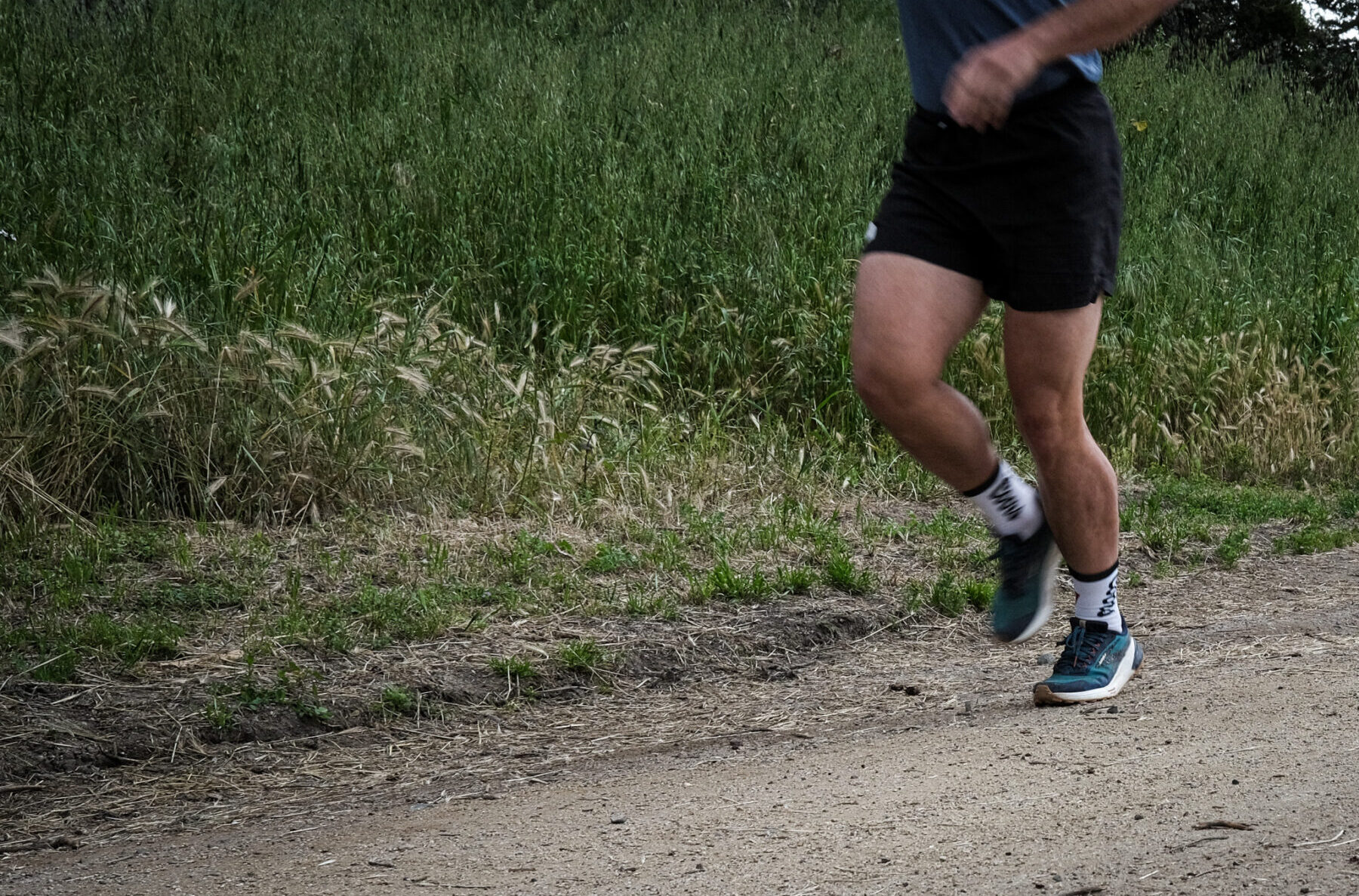
I see you stated the insole weight. However, I received a pair of Catamounts and they appear to not have insoles that can be removed??? How did you get them out? I am interested in after market insoles … but am stuck! Am is missing something here? Thanks. Tom
Hey Tom,
I was able to pry the insoles from my pair with a little bit of effort. Footwear manufacturers sometimes add a bit of glue to secure them inside the shoe.
Matt